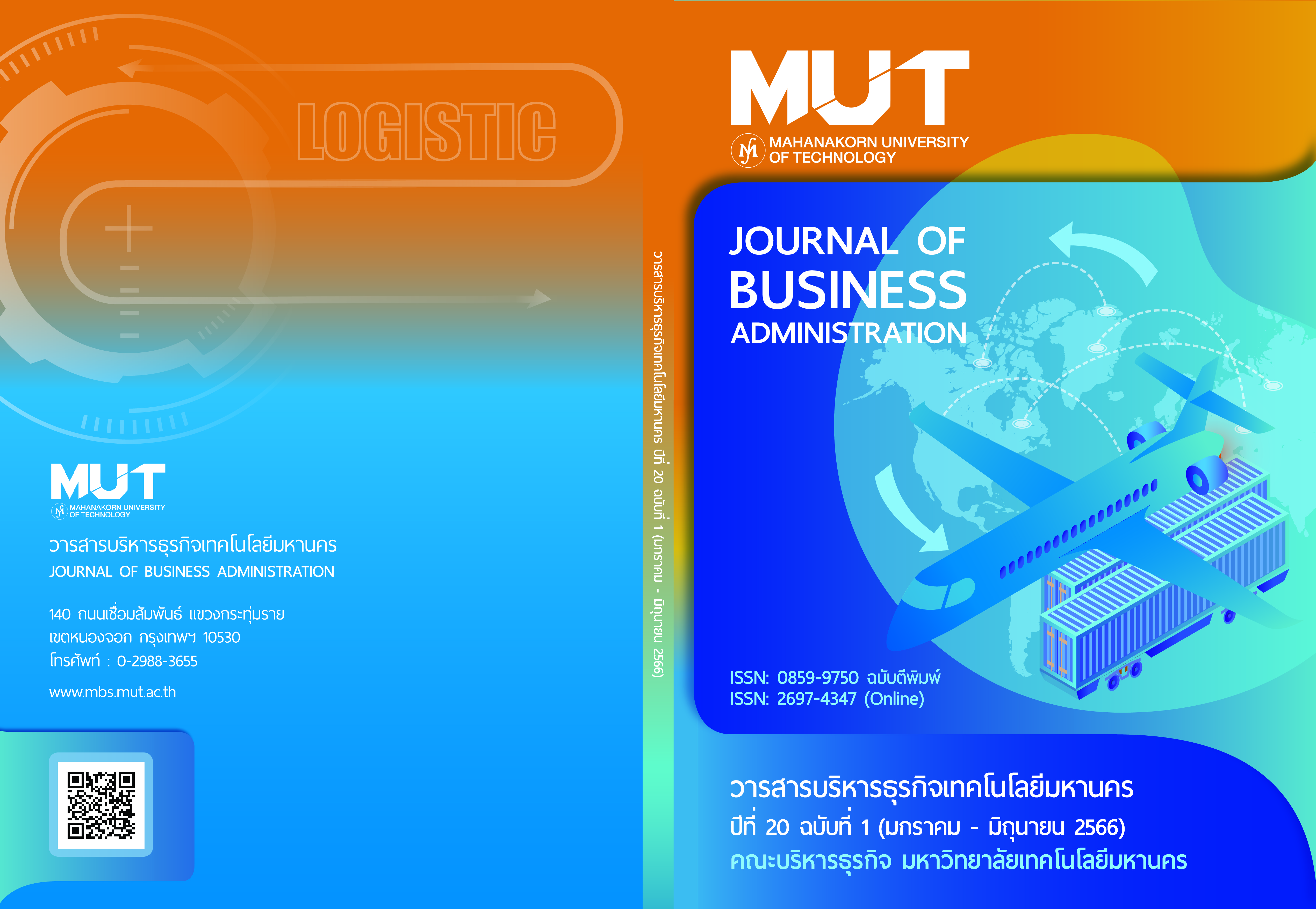Problems Related to Real Estate Law: A case study of the Commercial Buildings in Unallocated Land Project Development
Keywords:
Real-estate development, Commercial buildings, Construction, Legal problemsAbstract
Residential real estate development is a highly investment-intensive business and involves a number of laws. If there is a problem with the development of the project, it may cause a lot of damage and impact on the people involved. The purpose of this research is to study real estate law problems, including analyzing causes and making suggestions to solve or prevent problems from occurring for commercial building projects that are unallocated projects. Most of which are projects initiated by new project developers who may not have much experience.
This research is qualitative research that studies secondary data related to real estate project development process, legal issues and related research. Then, the data were used to prepare in-depth interviews to collect additional information from 12 experts involved in real estate project development, including project developers, contractors, designers, government officials and financial institution officials. The data were analyzed using content analysis and triangulation to confirm the reliability of the data.
The results of the research revealed that there were several issues with different legal requirements. The most severe problems that may cause the project to fail or be demolished related to conflicts with neighboring land or public land, construction drawings and construction. Therefore, project developers should be aware and be careful from the early stages of project development in order to find ways to prevent and solve problems that may arise.
References
Bangkokbiznews. 2021. Un-subdividing project development phenomenon. Retrieved March 14, 2022 from https://www.bangkokbiznews.com/business/943318
Boddy, C. R. 2016. Sample Size for Qualitative Research. Qualitative Market Research: An International Journal. 19. 426 – 432.
Chanthavanich, S. 1999. Qualitative research. Chulalongkorn university press. Bangkok.
Hommanee, S. and Pintusonsri, K. 2019. Notice According to Building Control Act. Sripatum Chonburi Journal. 15 (3). 42 – 53.
Intarated, P. and Nimnoi, S. 2016. Legal Problems and Obstacles on the Impact of Building Construction on the Environment and Public Health. Journal of Southern Technology. 8 (1). 17 – 26.
Janyasuthiwong, P., Pimpoung, K. and Yooyen, W. 2016. The word “Space” and its meaning in the Building control law. Journal of The Faculty of Architecture King Mongkut’s Institute of Technology Ladkrabang. 22 (1). 40 – 55.
Jumroonvong, P. 2015. Modification or Expansion of Town House/Home. Panyapiwat Journal. 7 (2). 135 – 145.
Kotaraphong, D. 2018. Legal Issues on Home Builder: Focusing on Home Improvement in Consumer Aspect. Thammasat Business Law Journal. 5 (1). 92 – 102.
Pancharoen, K. 2018. Legal Problems Relating to Housing Business Affecting Consumers. Huachiew Chalermprakiet Law Journal. 8 (2). 1 – 13.
Promthongdee, K. and Nuchprayool, B. 2019. Legal Problem on Land Use with a Minister Regulation enforcing a comprehensive Plan Legislative Act B.E. 2518. Rajapark Journal. 13 (2). 113 – 127.
Roachanakanan, T. 2015. Analysis and Argument on the Town and Country Planning Act B.E. 2518. Ramkhamhaeng Law Journal. 4 (1). 1 – 15.
Ronghanam, P. 2015. Evolution of Urban Planning of Thailand. NAJUA: History of Architecture and Thai Architecture. 12 (1). 250 – 271.
Suseensumpun, P. and Samart, P. 2020. Government Policy on Building Control: Legal Aspect. The academic journal Faculty of Humanities and Social Sciences: Nakhon Sawan Rajabhat University. 7 (2). 46 – 49.
Tochaiwat, K. 2021. Housing development. Rangsit university printing house. Pathumthani. 20 - 175.
Additional Files
Published
Issue
Section
License

This work is licensed under a Creative Commons Attribution-NonCommercial-NoDerivatives 4.0 International License.
ข้อความ ข้อคิดเห็น ข้อมูล เนื้อหา รูปภาพ แผนภูมิ แผนผัง เป็นต้น ที่ปรากฏและแสดงในบทความต่างๆ ในวารสารบริหารธุรกิจเทคโนโลยีมหานคร ถือเป็นความรับผิดชอบโดยตรงของผู้เขียนบทความนั้นๆ มิใช่เป็นความรับผิดชอบใดๆ ของวารสารบริหารธุรกิจเทคโนโลยีมหานคร และมหาวิทยาลัยเทคโนโลยีมหานคร
บทความที่ตีพิมพ์ในวารสารบริหารธุรกิจเทคโนโลยีมหานคร ถือเป็นลิขสิทธิ์เฉพาะของคณะบริหารธุรกิจ มหาวิทยาลัยเทคโนโลยีมหานคร หากบุคคลหรือหน่วยงานใดต้องการนำทั้งหมดหรือส่วนใดส่วนหนึ่งไปเผยแพร่ต่อหรือเพื่อกระทำการใดๆ จะต้องได้รับการอนุญาตเป็นลายลักษณ์อักษรจากคณะบริหารธุรกิจ มหาวิทยาลัยเทคโนโลยีมหานครก่อนเท่านั้น


